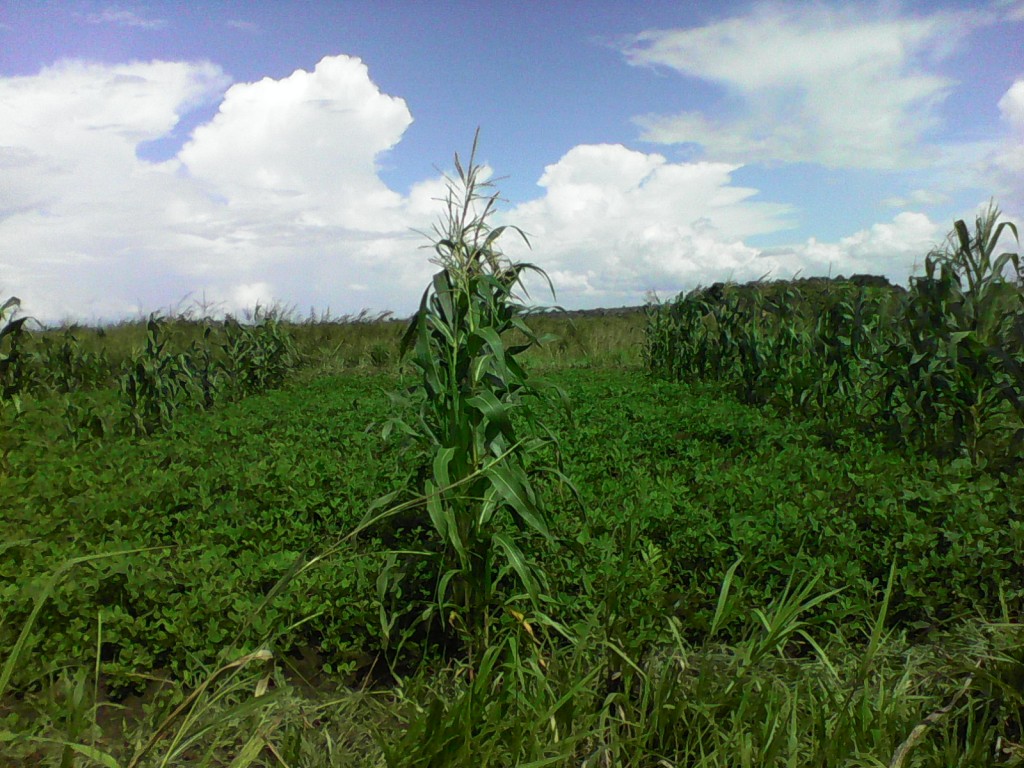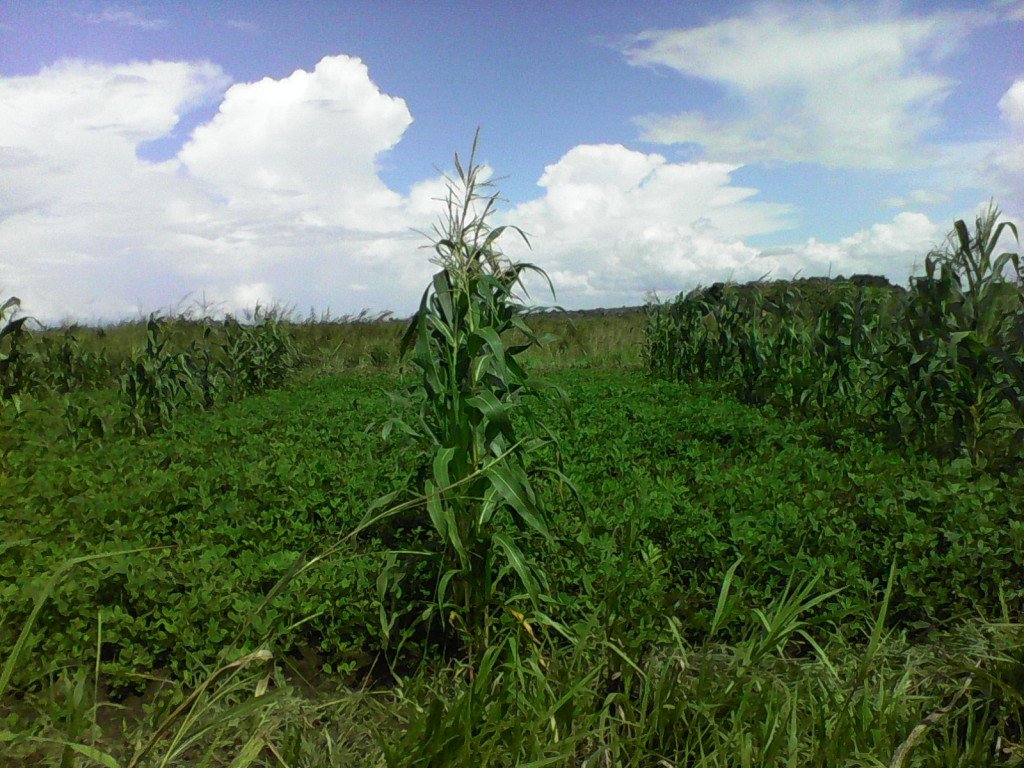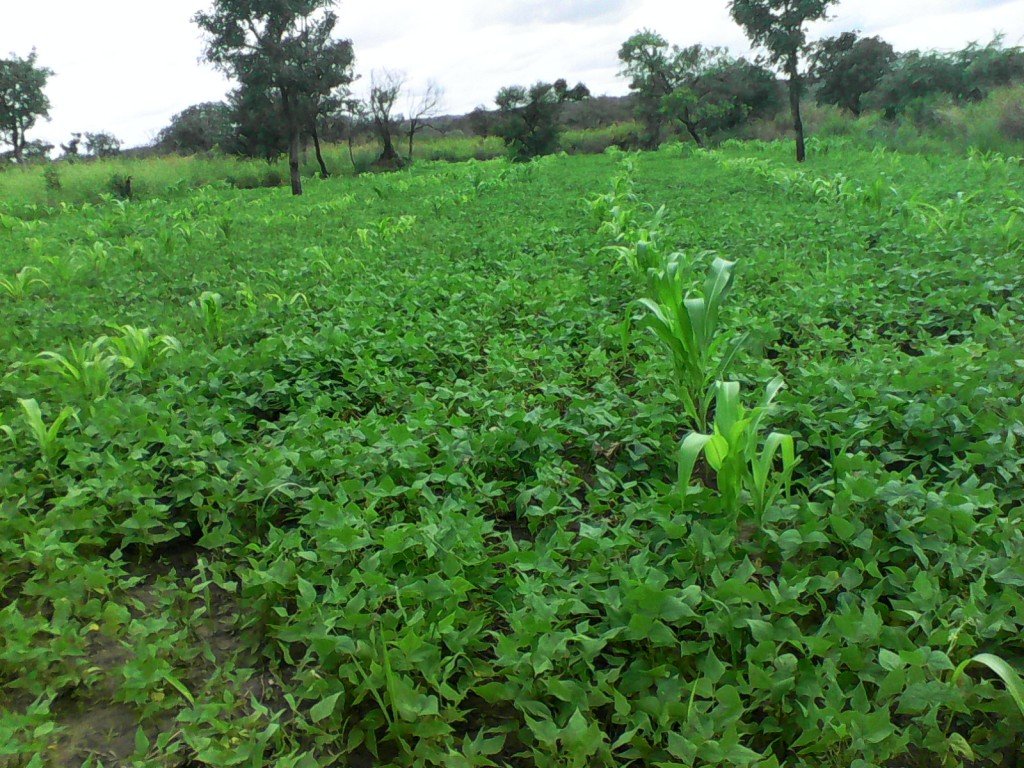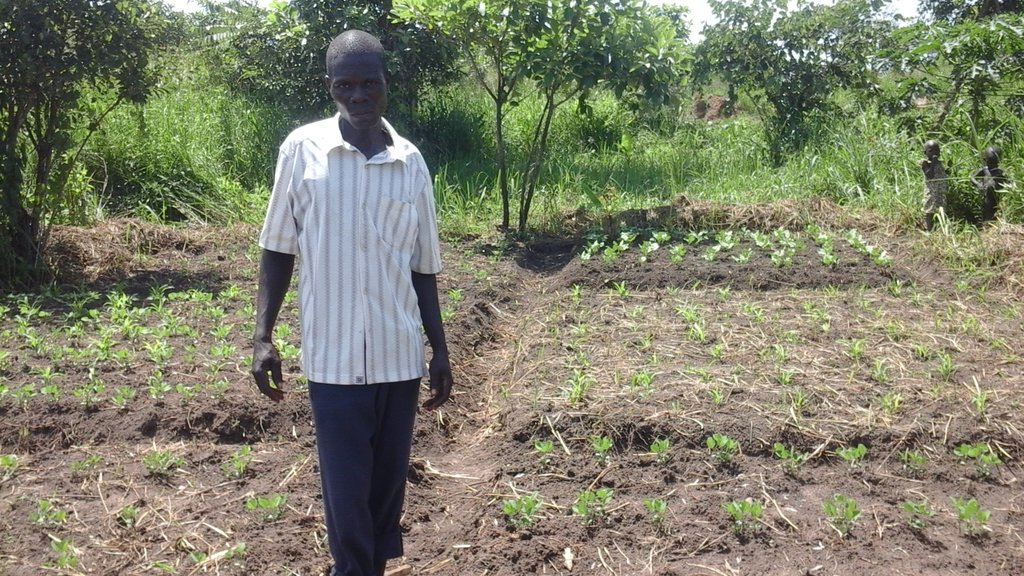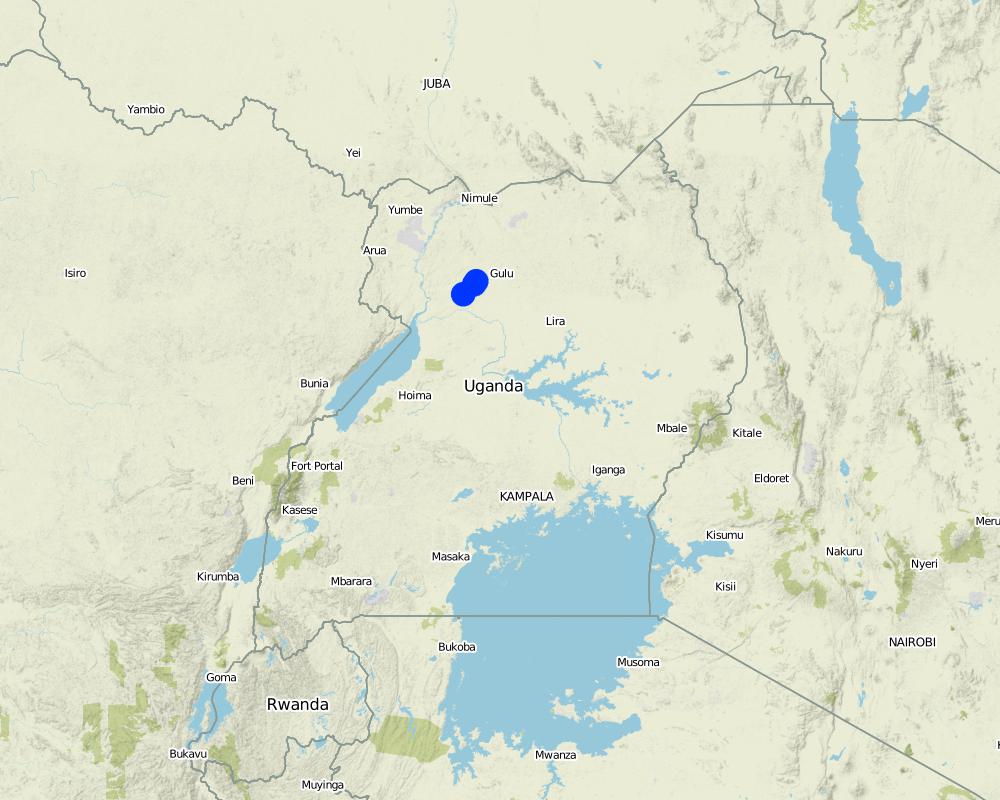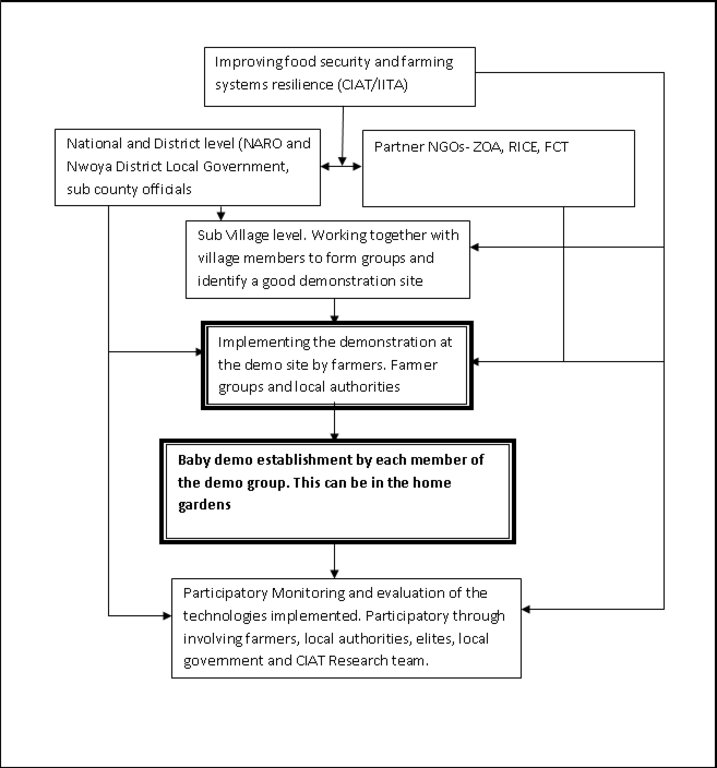Promoting intercropping through baby demos [Uganda]
- Creation:
- Update:
- Compiler: Sunday Balla Amale
- Editor: –
- Reviewers: John Stephen Tenywa, Nicole Harari
poto matino
approaches_3327 - Uganda
View sections
Expand all Collapse all1. General information
1.2 Contact details of resource persons and institutions involved in the assessment and documentation of the Approach
Key resource person(s)
land user:
okello Martin
Local Farmer
Oporlacen-Olwiyo, Purongo Sub-county, Nwoya District
Uganda
Name of project which facilitated the documentation/ evaluation of the Approach (if relevant)
Scaling-up SLM practices by smallholder farmers (IFAD)Name of the institution(s) which facilitated the documentation/ evaluation of the Approach (if relevant)
Uganda Landcare Network (ULN) - Uganda1.3 Conditions regarding the use of data documented through WOCAT
When were the data compiled (in the field)?
12/12/2017
The compiler and key resource person(s) accept the conditions regarding the use of data documented through WOCAT:
Yes
2. Description of the SLM Approach
2.1 Short description of the Approach
A demonstration site is established where farmers come and learn about good intercropping practices. They are then tasked to replicate this practice at their homes in the baby demos.
2.2 Detailed description of the Approach
Detailed description of the Approach:
The baby demo approach involves establishing a mother demo in one location where members of the farmer group can come and learn about the technology of interest (intercropping in this case). The farmers who participate in the demo are then tasked to replicate what is carried out in the demo by establishing smaller baby demos at their homes so that whatever is performed in the mother demo, they transfer the knowledge to their own baby demos. This helps to take the ideas in the demonstration to the farmers' homes so that they can appreciate what is being done on the demo and own the technology being implemented.
This approach was promoted because most farmers in northern Uganda practice inappropriate intercropping methods where they plant together two cereals in the same garden and call it an inter crop e.g maize and rice or millet and sorghum. Baby demo helps the farmers to know that they can implement the practices on their own hence increasing sustainability of the approach. It also helps neighbours and family members who are not participating in the demonstration activities to learn from the baby demo.
During the project activities, a demonstration site was identified in collaboration with the farmer group, a field was established by the group members consisting of 35 people on average (composed of men, women and youth). The demo area measured about 10m x 10m. Each participant was then given a handful of seeds to go and establish their demo of approximately 8m2 on estimate.
The farmers then implemented the demo and baby demos with intercropping of maize and beans. Joint monitoring and evaluation was later carried out.
2.3 Photos of the Approach
2.5 Country/ region/ locations where the Approach has been applied
Country:
Uganda
Region/ State/ Province:
Northern Uganda
Further specification of location:
Alero, Koch Goma, Anaka and Purongo Sub-County, Nwoya District
Map
×2.6 Dates of initiation and termination of the Approach
Indicate year of initiation:
2014
If precise year is not known, indicate approximate date when the Approach was initiated:
less than 10 years ago (recently)
Year of termination (if Approach is no longer applied):
2017
Comments:
three years project
2.7 Type of Approach
- project/ programme based
2.8 Main aims/ objectives of the Approach
improving farming systems resilience, farmers appreciation of the technology within their own farms
2.9 Conditions enabling or hindering implementation of the Technology/ Technologies applied under the Approach
social/ cultural/ religious norms and values
- enabling
community group membership
institutional setting
- enabling
good institutional framework
collaboration/ coordination of actors
- enabling
more than 3 parties involving government and non governmental, local farmers
policies
- enabling
PMA-Plan for Modernisation of Agriculture, a Government policy aimed at ensuring adoption of modern farming technologies
Vision 2040-A government policy aims at transforming uganda's agriculture from subsistence to commercial farming.
knowledge about SLM, access to technical support
- enabling
various agencies,
markets (to purchase inputs, sell products) and prices
- enabling
good market access and transport network
- hindering
middle men cheating producers
3. Participation and roles of stakeholders involved
3.1 Stakeholders involved in the Approach and their roles
- local land users/ local communities
farmers
implementing the demo
- community-based organizations
farmer groups, Village Saving and Loan Association (VSLA) groups
work as a team at the demo
- SLM specialists/ agricultural advisers
District Agriculture/extension officers,
organise farmers
- researchers
CIAT
Monitoring and evation output, analysis of effectiveness of the method
- teachers/ school children/ students
teachers
part of farmer groups
- NGO
ZOA, Rural Initiative for community Empowerment (RICE), Forum for comunity transformation (FCT)
Participatory monitoring and evaluation (PME)
- private sector
business community
PME
- local government
District, sub county and parish officials
liase with local communities, PME
- national government (planners, decision-makers)
NARO -
Policy framework analysis
- international organization
IFAD, CIAT, IITA, ZOA-
initiation, planning, implementation, monitoring and evaluation of the project activities
If several stakeholders were involved, indicate lead agency:
CIAT
3.2 Involvement of local land users/ local communities in the different phases of the Approach
| Involvement of local land users/ local communities | Specify who was involved and describe activities | |
|---|---|---|
| initiation/ motivation | external support | CIAT-draft of project for increasing food security and farming systems resilience in East Africa through wide scale adoption of Climate Smart Agricultural Practices |
| planning | external support | CIAT/IITA/IFAD-establishment of objecttives, sourcing of funds. |
| implementation | interactive | farmer groups formed, then they implement the demo at demo site and baby demos at their own homes. Stakeholders at village, sub-county, district and national levels also involved. |
| monitoring/ evaluation | interactive | Participatory monitoring and evaluation where farmers were able to rank the performance of their crops under the demo and baby demos, challenges, and possible solutions. |
3.3 Flow chart (if available)
3.4 Decision-making on the selection of SLM Technology/ Technologies
Specify who decided on the selection of the Technology/ Technologies to be implemented:
- all relevant actors, as part of a participatory approach
Explain:
Rappid appraisal with farmers to establish the needs of the farmers
Specify on what basis decisions were made:
- evaluation of well-documented SLM knowledge (evidence-based decision-making)
4. Technical support, capacity building, and knowledge management
4.1 Capacity building/ training
Was training provided to land users/ other stakeholders?
Yes
Specify who was trained:
- land users
If relevant, specify gender, age, status, ethnicity, etc.
all gender, age group and people of different status quo
Form of training:
- demonstration areas
Subjects covered:
intercropping with legumes and cereals
4.2 Advisory service
Do land users have access to an advisory service?
Yes
Specify whether advisory service is provided:
- on land users' fields
4.3 Institution strengthening (organizational development)
Have institutions been established or strengthened through the Approach?
- yes, moderately
Specify the level(s) at which institutions have been strengthened or established:
- local
Describe institution, roles and responsibilities, members, etc.
Farmer groups for implementation of of technology, involvement of different age groups and gender in the implementation of technologies.
Specify type of support:
- capacity building/ training
4.4 Monitoring and evaluation
Is monitoring and evaluation part of the Approach?
Yes
Comments:
Participatory Monitoring and evaluation (PME)
If yes, is this documentation intended to be used for monitoring and evaluation?
No
4.5 Research
Was research part of the Approach?
Yes
Specify topics:
- technology
Give further details and indicate who did the research:
CIAT based research output
5. Financing and external material support
5.1 Annual budget for the SLM component of the Approach
If precise annual budget is not known, indicate range:
- 2,000-10,000
Comments (e.g. main sources of funding/ major donors):
IFAD funded. 5 different demonstration groups were considered, one in each of the sub-county. Actual implementation cost could be obtained from CIAT.
5.2 Financial/ material support provided to land users
Did land users receive financial/ material support for implementing the Technology/ Technologies?
No
5.3 Subsidies for specific inputs (including labour)
- agricultural
| Specify which inputs were subsidised | To which extent | Specify subsidies |
|---|---|---|
| seeds | partly financed | handful of seed for the baby demo |
If labour by land users was a substantial input, was it:
- voluntary
Comments:
farmers worked in groups
5.4 Credit
Was credit provided under the Approach for SLM activities?
No
5.5 Other incentives or instruments
Were other incentives or instruments used to promote implementation of SLM Technologies?
Yes
If yes, specify:
refreshments during demonstration activities
6. Impact analysis and concluding statements
6.1 Impacts of the Approach
Did the Approach empower local land users, improve stakeholder participation?
- No
- Yes, little
- Yes, moderately
- Yes, greatly
made participatory
Did the Approach enable evidence-based decision-making?
- No
- Yes, little
- Yes, moderately
- Yes, greatly
farmers selected what should be implemented
Did the Approach help land users to implement and maintain SLM Technologies?
- No
- Yes, little
- Yes, moderately
- Yes, greatly
implemented in their own gardens in the baby demos
Did the Approach improve coordination and cost-effective implementation of SLM?
- No
- Yes, little
- Yes, moderately
- Yes, greatly
other farmers not able to be part of the demo learn from the baby demos
Did the Approach mobilize/ improve access to financial resources for SLM implementation?
- No
- Yes, little
- Yes, moderately
- Yes, greatly
directed towards technology transfer
Did the Approach improve knowledge and capacities of land users to implement SLM?
- No
- Yes, little
- Yes, moderately
- Yes, greatly
obtained training from the demo, then able to implement in their farms
Did the Approach improve knowledge and capacities of other stakeholders?
- No
- Yes, little
- Yes, moderately
- Yes, greatly
through PME
Did the Approach build/ strengthen institutions, collaboration between stakeholders?
- No
- Yes, little
- Yes, moderately
- Yes, greatly
many institutions involed
Did the Approach mitigate conflicts?
- No
- Yes, little
- Yes, moderately
- Yes, greatly
group membership and social relations in the demos
Did the Approach empower socially and economically disadvantaged groups?
- No
- Yes, little
- Yes, moderately
- Yes, greatly
voluntary participation involving all categories of people
Did the Approach improve gender equality and empower women and girls?
- No
- Yes, little
- Yes, moderately
- Yes, greatly
all gender equally participated, disadvanteaged women were highly encouraged to be part
Did the Approach encourage young people/ the next generation of land users to engage in SLM?
- No
- Yes, little
- Yes, moderately
- Yes, greatly
youth involved
Did the Approach improve issues of land tenure/ user rights that hindered implementation of SLM Technologies?
- No
- Yes, little
- Yes, moderately
- Yes, greatly
not part of objective
Did the Approach lead to improved food security/ improved nutrition?
- No
- Yes, little
- Yes, moderately
- Yes, greatly
better farm output as a result of the technology
Did the Approach improve access to markets?
- No
- Yes, little
- Yes, moderately
- Yes, greatly
marketing skills were taught
Did the Approach lead to improved access to water and sanitation?
- No
- Yes, little
- Yes, moderately
- Yes, greatly
not part of the objective
no part of the objective
Did the Approach improve the capacity of the land users to adapt to climate changes/ extremes and mitigate climate related disasters?
- No
- Yes, little
- Yes, moderately
- Yes, greatly
technology is specifically CSA practice
Did the Approach lead to employment, income opportunities?
- No
- Yes, little
- Yes, moderately
- Yes, greatly
to field staff
6.2 Main motivation of land users to implement SLM
- increased production
higher yields
- increased profit(ability), improved cost-benefit-ratio
more produce
- reduced land degradation
intercrop maintains soil fertility
- reduced risk of disasters
intercrop functions such as reduced erosion, reduce crop failures
- reduced workload
easy management
- affiliation to movement/ project/ group/ networks
group membership. people from one group worked hard to ensure good output from their demo
- enhanced SLM knowledge and skills
trainings provided to farmers
6.3 Sustainability of Approach activities
Can the land users sustain what has been implemented through the Approach (without external support)?
- yes
If yes, describe how:
simple and easy
6.4 Strengths/ advantages of the Approach
| Strengths/ advantages/ opportunities in the land user’s view |
|---|
| Farmers appreciate the technology from within their homestead |
| Other neighboring farmers or family members who did not participate in the demo can learn from the baby demo |
| Farmer can easily reflect on the demo and compare with his baby demo |
| Strengths/ advantages/ opportunities in the compiler’s or other key resource person’s view |
|---|
| Knowledge spillover has a wider coverage as people who did not get opportunity to participate in the main demo would learn from their neighbors. |
| Project can be sustained for a longer period since the farmers can be tasked to do the baby demo in the following years. |
6.5 Weaknesses/ disadvantages of the Approach and ways of overcoming them
| Weaknesses/ disadvantages/ risks in the land user’s view | How can they be overcome? |
|---|---|
| Farmer overlook the importance of baby demos saying it looks like children playing garden. | establish a sizeable baby demo |
| Domestic animals eat the crops in the baby demos. | control the animals |
7. References and links
7.1 Methods/ sources of information
- field visits, field surveys
1
- interviews with land users
10
- interviews with SLM specialists/ experts
2
Links and modules
Expand all Collapse allLinks
No links
Modules
No modules


